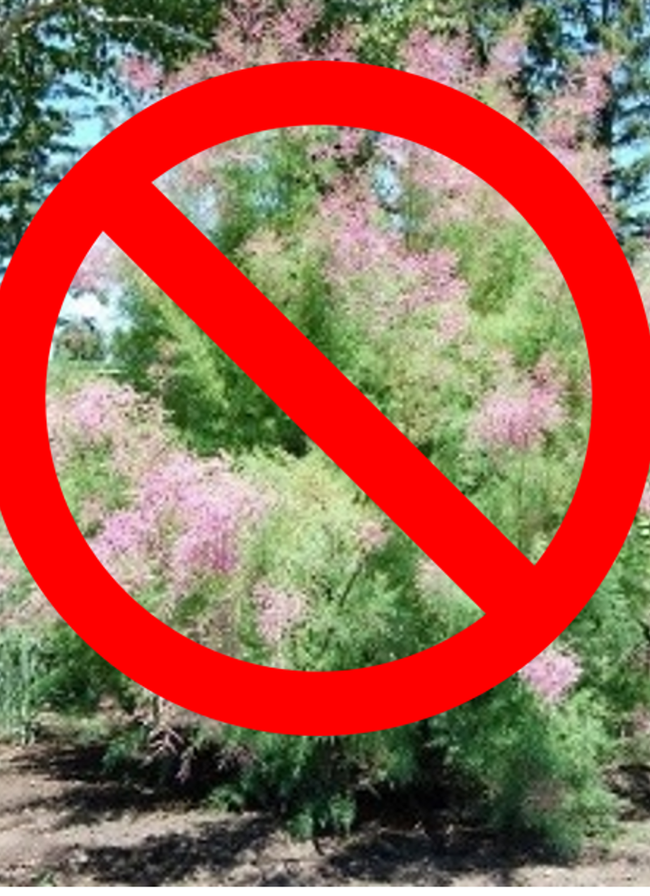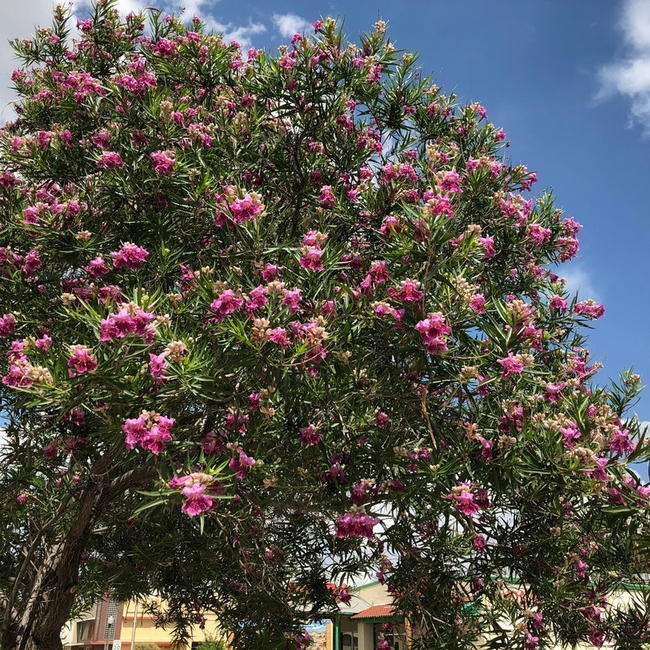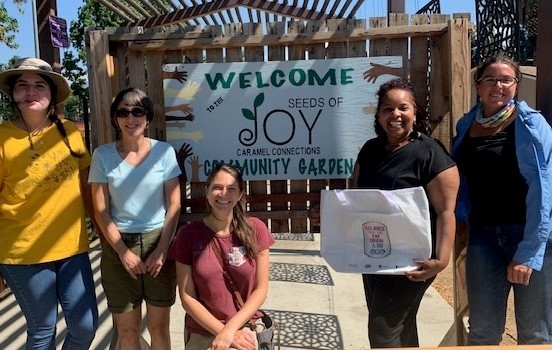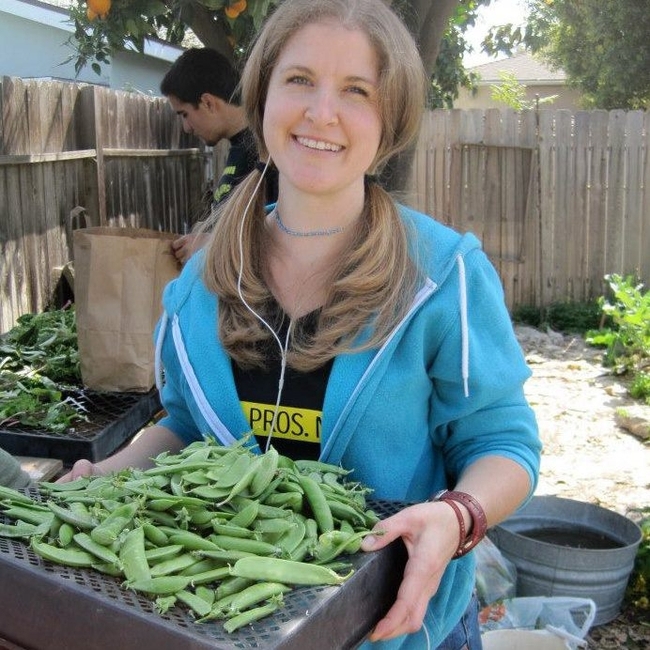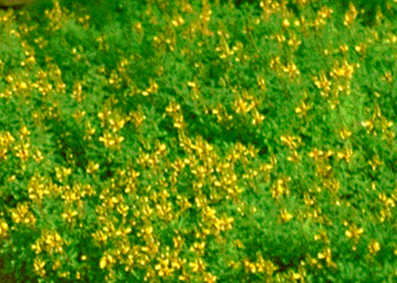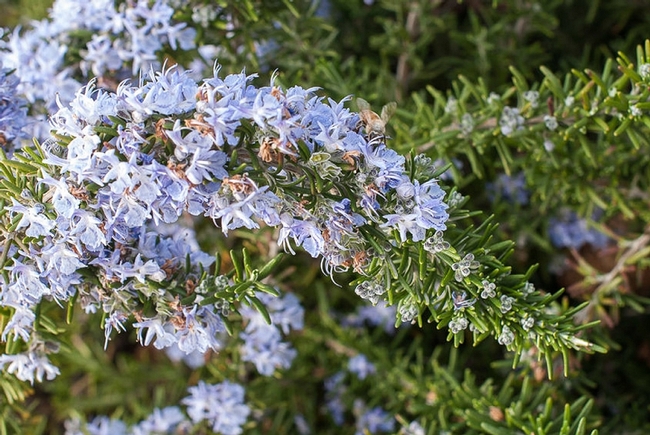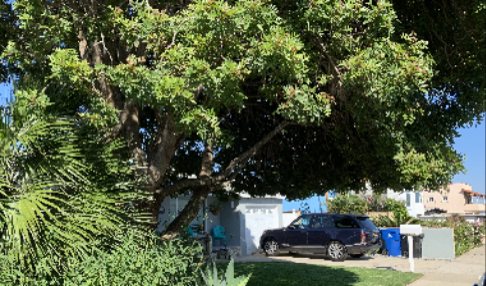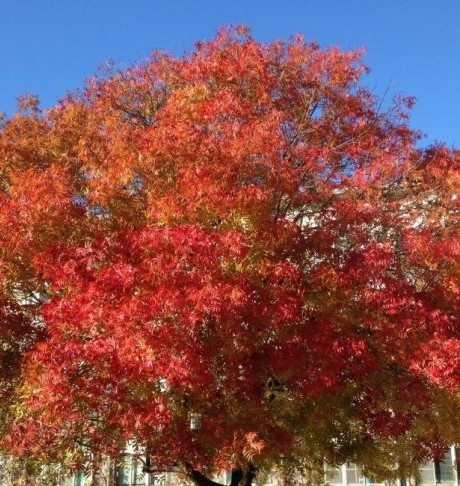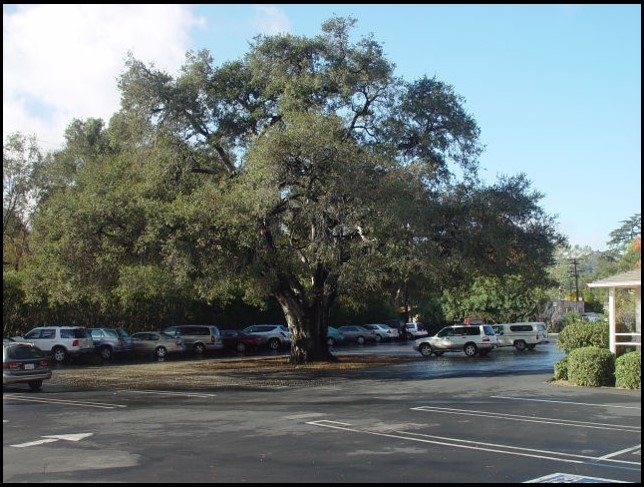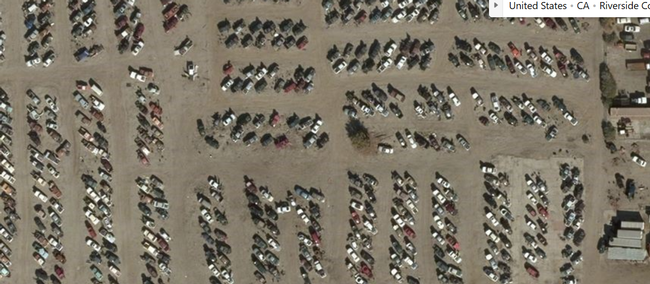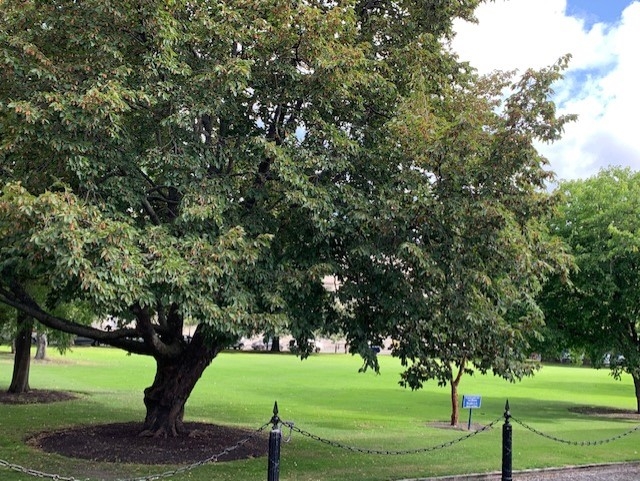Posts Tagged: los angeles
Invasive Trees to Avoid/Suggested Alternatives
Many previously “welcomed” urban tree species have outlived their stay, becoming invasive and crowding out other plants in our Southern California landscapes. You can help by avoiding planting these trees identified by various sources (including the California Invasive Plant Council) to be too aggressive and habitat/resource-depleting for further planting.
Invasive Trees to Avoid Planting
Athel (Tamarix aphylla)
Black Locust (Robinia pseudoacacia)
Blackwood Acacia (Acacia melanoxylon)
Brazilian Pepper (Schinus terebinthifolius)
Chinaberry (Melia azedarach)
Chinese Tallow Tree (Triadica sebifera)
English Hawthorn (Crataegus monogyna)
Peruvian Pepper Tree (Schinus molle)
Red Gum (Eucalyptus camaldulensis)
Russian Olive (Elaeagnus angustifolia)
Saltcedar (Tamarix ramosissima, T. gallica, T. chinensis)
Silver Wattle (Acacia dealbata)
Smallflower Tamarisk (Tamarix parviflora)
Tasmanian Bluegum (Eucalyptus globulus)
Plant These Instead
They are drought/heat resistant, low maintenance, and have no known significant pest or disease problems and are not currently overplanted). Find other suggestions here: https://www.cal-ipc.org/solutions/prevention/landscaping/dpp/?region=socal
African Fern Pine (Afrocarpus falcatus) (formerly Podocarpus elatior)
Cascolote (Caesalpinia cacalaco Smoothie®)
Desert Willow ‘Bubba' (Chilopsis linearis)
Fringe Tree (Chionanthus virginicus)
Island Oak (Quercus tomentella)
‘Maverick' Mesquite (Prosopis glandulosa)
Mulga (Acacia aneura)
Netleaf Hackberry (Celtis reticulata)
Pink Chitalpa (x Chitalpa tashkentensis 'Pink Dawn')
‘Red Push' Pistache (Pistacia x ‘Red Push')
Thornless South American Mesquite (Prosopis x Phoenix)
Benefits of Horticulture and Human Interactions
“To forget how to dig the earth and to tend the soil is to forget ourselves.” Mohandas K. Gandhi, World leader, political ethicist, lawyer
“Everything that slows us down and forces patience, everything that sets us back into the slow circles of nature, is a help. Gardening is an instrument of grace. ” May Sarton, Poet “
"May our heart's garden of awakening bloom with hundreds of flowers.” Thich Nhat Hanh, global spiritual leader and activist “If you have a garden and a library, you have everything you need.” Marcus Tullius Cicero, Roman philosopher
"The importance of encouraging our children in outdoor work with living plants is now recognized. It benefits the health, broadens the education, and gives a valuable training in industry and thrift. The great garden movement is sweeping over all America, and our present problem is to direct it and make it most profitable to the children in our schools and homes. — Van Evrie Kilpatrick, 1918, in “The Child's Food Garden”
As the above quotes so beautifully proclaim, interacting with nature, whether passively (viewing plants) or actively (gardening, etc.) offers many positive benefits. In fact, the link between horticulture and health and well-being has been scientifically documented for centuries. In 1812, psychiatrist, professor, and Declaration of Independence signer Dr. Benjamin Rush reported that patients participating in gardening activities had better mental health outcomes than non-gardening counterparts.
Many additional papers were published throughout the 1800's documenting benefits of active participation in gardening. More recently, positive links between simply viewing plants through a window or even on a television, movie, or exercise apparatus screen have been reported in peer-review journals. A groundbreaking study in this area was published in 1984 by environmental psychologist Robert Ulrich (Ulrich, 1984) who compared post-operative patients recovering from gall bladder surgery who had views of landscape plants to recovering patients who had the same surgery in the same facility with views of a brick wall. Patients with landscape views had fewer surgical complications, shorter hospital stays, required fewer analgesics, had better moods, and even fewer derogatory remarks by medical staff in their daily records.
Since 1984, dozens of other studies have documented similar positive outcomes resulting from both passive and active engagement with nature and plants. These include improved physical, mental and emotional health; environmental benefits; and community and societal benefits. Recent literature reviews that summarize these findings include:
- An overview of 77 peer-reviewed journal articles (Howarth, et. al., 2020) identified 35 positive outcomes linking physical and mental health and well-being to active and passive horticultural interactions. doi: https://10.1136/bmjopen-2020-036923
-A meta-analysis (Soga, 2016) of 22 studies identified several positive mental health outcomes related to gardening including mood, group cohesiveness, cooperation, pride, well-being, and more. https://doi.org/10.1016/j.pmedr.2016.11.007 -
An overview of 45 peer-review studies (Shepley, et. al., 2019) identified links between properly designed and maintained urban green spaces and crime, gun violence, and the overall safety and cohesiveness of low-wealth urban neighborhoods. https://doi.org/10.3390/ijerph16245119
- A review of 120 papers (Crus-Piedrahita, et. al., 2020) reported public health benefits from urban horticulture activities in the global North. Thirty-two papers had a specific focus on social cohesion and/or social capital. https://doi:10.1016/j.glt.2020.10.001
-Alizadeh (2019) synthesized research regarding the environmental benefits of urban plants, highlighting their vital roles in combating climate change, cooling urban heat islands, providing habitat, removing air and water pollutants, enhancing soil health, and more. https://www.researchgate.net/deref/https%3A%2F%2Fdoi.org%2F10.1108%2FIJCCSM-10-2017-0179
Enjoy your garden! Enjoy a day in nature.
Synthetic turf, dark mulch and asphalt surfaces are superheating our inland cities
an plants help cool our urban heat islands and mitigate impacts of climate change in our inland cities? I've been interested in measuring the temperatures of living and non-living surfaces for some time. Preliminary results are in! Use of dark asphalt, synthetic turf,
and dark colored mulches are superheating our inland and desert cities. The hottest material of the three is synthetic turf which reached over 165 degrees F in Palm Springs and 159 degrees F in Redlands on days when the air temperatures were, respectively, 113 and 108 degrees F this summer. On five separate days in July, seconds after I took a quick photo above the artificial turf, my I-phone shut down, leaving me with the ominous heat warning message shown here (lower right).
What can you do?
Take care of your trees, shrubs, groundcovers, and lawns to maximize their ability to cool the surrounding environment. In the same experiment described above, the coolest temperatures occurred in lawns growing in the shade of a mature tree. This is due to living plants cooling the environment during the process of transpiration. Non-living surfaces don't provide this natural air-conditioning. While many people believe lawns waste water, it's important to fully consider the alternative of replacing a water-efficient warm-season lawn like Bermuda or Buffalograss with either dark mulch or no living plants at all. The lawns are much cooler! Our previous UC studies determined that it's often not the lawns (and other sprinkler-irrigated plants like groundcovers) that waste the water, it's the uneven coverage (low distribution uniformity) of most sprinkler systems, coupled with not applying the right amount of water seasonally.
However, If you're tired of your high maintenance lawn and want to ditch your lawnmower, fertilizers, and pesticides, consider a low-maintenance drought-resistant groundcover that has similar cooling effects without the need for chemical inputs.
Plant drought-tolerant groundcovers
Here are just a few examples:
Peruvian Verbena (Verbena peruviana). This groundcover grows to only 1" tall and sports dark green leaves and white to pinkish (several hybrids available) blossoms that bloom from spring through fall. It spreads quickly and requires little water once established.
Dwarf Rosemary (Rosmarinus prostratus) This particular rosemary species is a low-growing groundcover. It is a great choice for rock gardens, reaching only 6 inches tall. It produces purple flowers in the summer and attracts pollinators and can be used for culinary purposes (bottom).
Gold Dalea (Dalea capitata). This semi-deciduous evergreen grows between 8" to 1' tall and has small yellow flowers that bloom in spring and fall and a pleasant scent. It is very heat tolerant and great for urban heat islands (parking lots, etc.) as well as planters and paths (lower right).
For more information on trees, groundcovers, shrubs, and vines suitable for your own home, contact a UC Cooperative Extension Master Gardener volunteer in your county using this link: https://mg.ucanr.edu/FindUs/
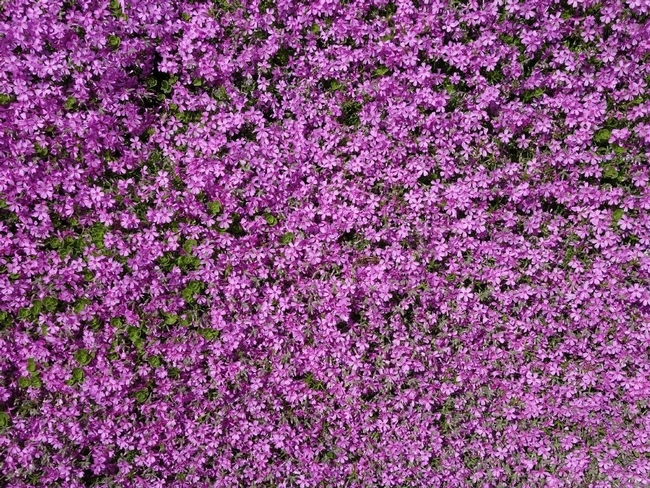
Tips to Keep Your Landscape Plants Alive During Drought
In your landscape, your trees and edibles should come first under drought and water restrictions! If there just isn't enough water to go around, your lawn and flowers should be sacrificed instead. Trees are our most valuable landscape resource and take years to maximize their benefits (shade, cooling, habitat/ecosystem enhancement, carbon dioxide storage, energy conservation, pollution filters, etc.).
Just a few slow, deep waterings with a garden hose away from the trunk and slightly beyond the drip line will keep established trees alive, even during summer. Remember to keep trunks dry!
Here are some other tips:
• Spread and maintain 2-4” of mulch around garden plants and trees (3-4” for wood chips, 2” for pebbles, decomposed gravel, etc.) keeping it a few inches away from tree trunks. (Note: dark colored dyed mulches should be avoided in inland and desert areas due to their high surface temperatures that can > 60 degrees F hotter than living plants and lighter colored mulches.)
• Water early in the morning when soil evaporation is minimal.
• Control weeds. They compete with other plants for water.
• Avoid fertilizing. Nitrogen increases growth and the need for more water.
• Don't plant new plants during the summer when temperatures are highest. Even drought-resistant native and non-native plants need regular watering their first season.
Be part of the solution: Plant drought, heat, and pest resistant trees to combat urban heat islands
Our population of urban trees is shrinking! You can help turn this around by protecting your own trees and by planting new ones recommended for your climate and the conditions around your home. For more on this topic, please revisit my February blog for specific selection and care recommendations: https://ucanr.edu/b/~ZuB.
In addition, please encourage your city to plant a wide range of recommended species today for a healthier tomorrow. Why is this so important? Many of our current street trees are in the 11th hour of their lifespans. While some that were planted decades ago are simply aging naturally, in other cases, they are perishing prematurely due to poor selection and care. This leads to a downward spiral; trees not adapted to the climate they're planted in and not receiving proper care are much more susceptible to invasive pests (shot-hole borers, etc.) and diseases than are healthy, well- chosen and maintained trees. Even the loss of one front yard shade tree can significantly reduce shade, increase the surrounding temperature, and diminish energy savings.
Another reason we're losing our trees is due to the negative impacts of urban heat islands (UHIs) which shorten the lifespan of many species of trees dramatically. Some trees (even many natives!) just aren't able to withstand the higher temperatures (sometimes exceeding 20 degrees) they are subjected to due to UHIs.
What are urban heat islands and why should we care? Urban heat islands are caused by reradiated heat from paved concrete and (especially) asphalt surfaces.
Hard surfaces of UHIs absorb large amounts of heat generated during the day and release it at night, slowly but steadily warming average nighttime (mostly) and daytime temperatures. Together, these negative impacts on our urban trees lead to a sad reality: the average lifespan of an urban tree is only about ¼ of its potential. While our stately shade-producing ficus, oak, maple, pine, rosewood and magnolia trees have potential lifespans of 80 -120 years or longer in unstressed environments, most perish much sooner.And, our cities are growing and expanding. Very few Southern California residents reside in rural areas. Instead of living near pastures, field-filled crops, and forests that cool the surrounding area through evapotranspiration, the vast majority of us reside in warmer urban city centers. Conditions we expect our city trees to endure in 2021 are very different from even 20 to 30 years alone, let alone decades ago.
The good news is that, through proper tree selection and care, we can be a part of the solution. In fact, trees offer many benefits that offset the impacts of UHIs. Cities with larger tree canopies are a testament to this fact and have fewer adverse impacts from UHIs than do cities with low tree canopies. Trees reduce the impact of UHIs by shading parking lots, buildings, and vehicles), deflecting the sun's radiation, and cooling the atmosphere through evapotranspiration. Trees also absorb and store carbon which lessens the impacts of pollution from fossil fuels. A well-tended mature landscape tree can absorb 40 tons of carbon over its lifespan.
The solution? Augment our current urban tree palettes with heat, drought, and pest-resistant native and adapted non-native species. A case in point of a native tree in trouble is our beautiful Joshua trees (Yucca brevifolia) which are dying off in their namesake National Park and seeding 500 or more feet higher elevation than parent plants. Planting trees that withstand UHIs today is crucial for tomorrow.
We are well on the way to identifying landscape tree species that can remain healthy under adverse urban conditions. In our study examining the performance of 12 species of underplanted but promising landscape trees, several candidates are standing out for their heat, drought, and pest resistance.





